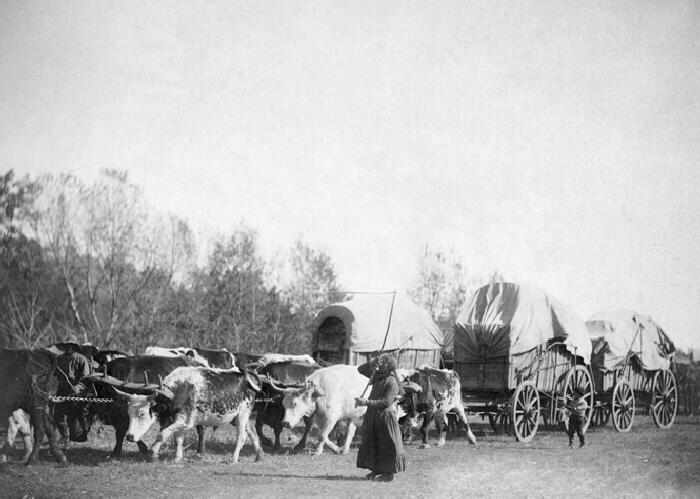
Figure 1.-- Accounts of bullwhackers normally refer to the men. But there were also women an children involved. Here we see a woman and little boy with a bullwhackers ox train about 1887. |

|
The bullwhackers are not some of the most honored figures in America's western expansion, but the none-the-less were an important part of it. Bullwhackers were present throughout the West. They were most important before the arrival of the railroad, but were still active in the 1890s to reach communities not yet served by the railroads. The bullwhackers were fright movers. They operated waggons pull by draft animals (oxen and mules). The got their name from the oxen (a castrated bull) and their used of rawhide whips used to urge the beasts forward. Another name for bullwhip is bullehack. I am not sure when the bullwhackers first appeared or when the term was first used, but it was a well established mode of transport by the mid-19th century. Bullwhackers were teamsters along with muleskinners. In the social ladder of the 19th century West, the bullwhackers and muleskinners were at the bottom, slightly below buffalo skinners. Here a factor was the terrible oder men acquired and their appearance after killing and skinning thousands of bufallo in conditions that did not allow for any form of personal hygene. The sweat-soaked unwashed clothing worn for weeks if not months at a time as well as vermin infestation was the normal lot of the bullwhacker. Their clothing that rarely had the benefit of wasjing was stained with mud, dust, sweat, animal oders, food, axel grease, and of course tobacco-juice--a noxious combintion. Their unwashed hair was notorious. The fact that this repulsed westerners whob were not known for their peronal hygene speaks for itself. Adding to this the blood and guts of the slain and skinned buffalo created a terribly repulsive mixture, explaining the social ranking of the buffalo skinners. Bullwhackers were especially known for their vulgarity and profanity--all part of the process of urging animals with their heavy loads forward. The claim goes that a bullwhacker was capable of issuing a steady stream of the most vile profanity for 10 minutes straight without repeating themselves. Bullwhackers were very creative in this regard and renound for it. General James F. Rusling described the Bullwhackers, "... red-shirted, big-booted, brigand-looking ruffians, with the inseparable Bowie knife and revolver buckled around their waists; they swing and crack their great whips like fiends, and beat the poor oxen along."
Bullwhackers have left us few personal accounts, in part because so few were literate. Bullwhackers are said to have earned about $25 a month. Muleskinners earned about $10 more.
Bullwhackers were reknown for their physical toughness. They did not ride on their wagons. They almost always walked with the oxen. Freight wagons unlike the covered wagons that carried the pioneers had no seats. The only place that bullwhackers could sit was on the wagon tongue and this was not very comfortable. Thus the bullwhackers truged along in all weather with the oxen teams.
Navigate the Boys' Historical Clothing Web Site:
[Return to the Main U.S. 19th century history page]
[Return to the Main U.S. historical trends page]
[Introduction]
[Activities]
[Biographies]
[Chronology]
[Clothing styles]
[Essays]
[Bibliographies]
[Contributions]
[FAQs]
[Glossaries]
[Images]
[Links]
[Registration]
[Tools]
[ Boys' Clothing Home]
